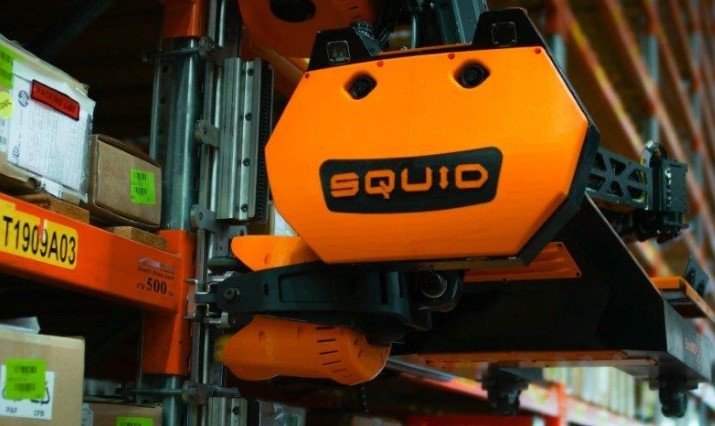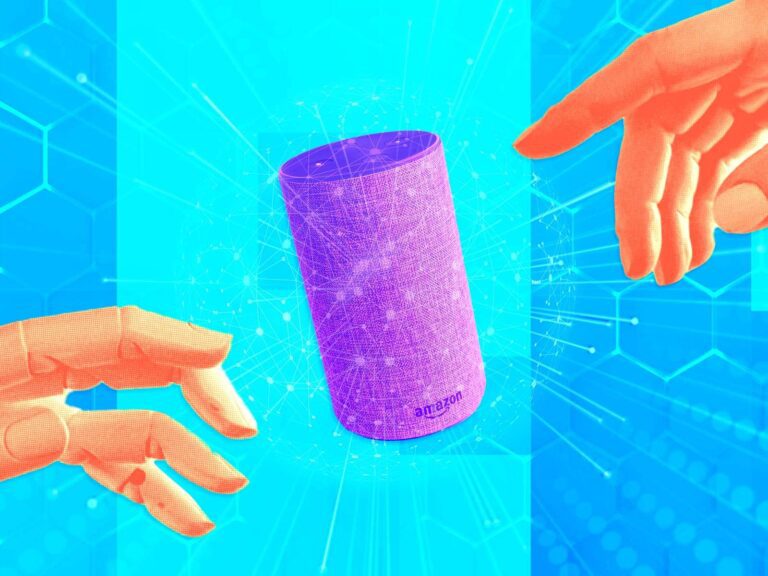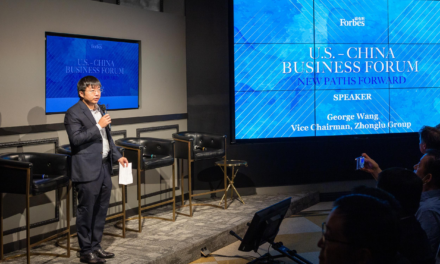Register for your free TechRepublic membership or if you are already a member, sign in using your preferred method below.
We recently updated our Terms and Conditions for TechRepublic Premium. By clicking continue, you agree to these updated terms.
Invalid email/username and password combination supplied.
An email has been sent to you with instructions on how to reset your password.
By registering, you agree to the Terms of Use and acknowledge the data practices outlined in the Privacy Policy.
You will also receive a complimentary subscription to TechRepublic’s News and Special Offers newsletter and the Top Story of the Day newsletter. You may unsubscribe from these newsletters at any time.
All fields are required. Username must be unique. Password must be a minimum of 6 characters and have any 3 of the 4 items: a number (0 through 9), a special character (such as !, $, #, %), an uppercase character (A through Z) or a lowercase (a through z) character (no spaces).
9 emerging technologies shaping corporate strategies in 2022
Your email has been sent
Now is the time to learn about composable applications, cybersecurity mesh and privacy-enhancing computation.
Data fabric and cybersecurity mesh are new technologies shaping corporate IT architecture while carbon-free shipping and new warehouse robots are boosting efficiency and safety. Emerging technologies cover everything from cybersecurity to climate change. These technology trends are the ones to watch in 2022 whether the tactic is still in the early stages, or growing quickly.
McKinsey lists clean technologies in its top 10 trends in tech due to the growing need for clean-energy generation. This covers systems to disbritute energy in the grid, store energy and allow carbon-neutral energy generation. These innovations cover renewable energy, carbon capture, smart-grid technologies, electric vehicles, wastewater treatment and smart buildings and infrastructure. As these technologies become less expensive to implement, McKinsey sees these emerging technologies as increasingly disruptive to traditional business models with the potential to influence industry structure and competitive dynamics.
The World Economic Forum also listed green tech as an emerging trend to track in 2022. Two examples of this progress are a passenger train that produces no carbon dioxide and alternative shipping fuels like green ammonia. The Coradia iLint runs in Sweden and is powered by hydrogen instead of diesel fuel. According to the manufacturer Alstom, Germany has ordered 41 of these trains and Italian train operator FNM has ordered 14.
In addition to reducing emissions from trains, innovators are working to reduce the climate impact of plane travel as well. Green ammonia could be a cheap alternative fuel for the shipping industry overall. Green ammonia is produced by using renewable energy to produce electricity that feeds an electrolyser to extract hydrogen from water. The challenge is getting these applied at scale, according to a World Economic Forum report.
This modular approach means using interchangeable building blocks to create applications. Composable applications rely on APIs to link separate pieces and enable data sharing. This approach can make it easier for organizations to adapt to changing business and market requirements more quickly than the traditional approach. This is due to the fact that new applications can be easily integrated with existing tech stacks without facing the problem of data silos.
Gartner sees this trend extending to a broader business philosophy that includes these tenets:
Companies can use this composable architecture to get stand-alone security solutions to work together to improve overall security. Gartner analyst Kasey Panetta recommends this new technology to cover identities outside the traditional security perimeter and to boost security for remote workers.
This distributed architectural approach can make it easier to scale cybersecurity control and make it more flexible and reliable as well. According to cybersecurity firm Check Point, cybersecurity mesh architecture has four foundational layers:
Gartner included data fabric on its top 12 strategic tech trends based on the potential to reduce data management efforts by up to 70%. This technology provides a new way to integrate data sources across platforms and business users. Data fabric supports “re-engineered decision-making” and can be used to figure out where data should be used and changed.
Data fabric is a design concept that uses human and machine capabilities to access data where it is currently located and to determine whether it should be moved or consolidated. In a description of data fabric, Gartner analyst Ashutosh Gupta shares this example of how the architecture can improve operations:
“… a supply chain leader using a data fabric can add newly encountered data assets to known relationships between supplier delays and production delays more rapidly, and improve decisions with the new data (or for new suppliers or new customers).”
Gupta explains that data fabric observes pipelines of information and then starts suggesting more productive alternatives to the existing processes. Implementing this infrastructure requires changing the focus of human and machine workloads.
The Linux Foundation’s report, State of the Edge 2021, found that edge infrastructure and applications grew as compared to 2020. There biggest barrier is the tremendous infrastructure investments needed to support the growing demand:
“We estimate that between 2019 and 2028, cumulative capital expenditures of up to $800 billion USD will be spent on new and replacement IT server equipment and edge computing facilities. These expenditures will be relatively evenly split between equipment for the device and infrastructure edges.”
Even with these infrastructure needs, edge computing is expanding in all global regions, the report found, with the largest edge footprint predicted to be in Asia Pacific at 38%. China, Japan and South Korea will be the biggest contributors to this infrastructure by 2028. Europe will be next at 29% and 21% in North America.
Advances in this sector include micro-modular edge data centers and new form factors such as street-side cabinets and light pole attachments. Edge computing will bring changes within hard drives as well with Arm server processors, AI processing chips, GPUs, smart network interface controllers and field-programmable gate arrays.
Internet of Things tech is not just for machines. Modjoul is using a wearable device to reduce injuries among workers and make sure people are using the right protective gear in certain settings. The platform uses RFID technology and a wearable device that can be worn around the neck or clipped on a belt or worn as a belt buckle. Six sensors in the device track motion, location and environmental data.
SEE: AI in closed-loop manufacturing can benefit edge computing systems: 4 things to consider in IIoT
Modjoul users track and try to prevent “risky bends” and twists in warehouse workforces. Modjoul published a case study based on a pilot project with a large e-commerce company and found that injury prevention specialists used Modjoul data to determine which workers needed training and which processes were likely to cause injuries. The company also drew these conclusions from the pilot project:
This tactic focuses on securing personal data in untrusted environments and uses privacy-protection techniques to allow value to be extracted from the information while meeting compliance requirements at the same time. This approach to data security is in the early days, according to Gartner, but has the potential to reduce the risk of data breaches. Scion Analytics recommends combining these techniques to assemble a privacy enhancing computation infrastructure:
Scion analyst Michael Tupek said in a blog post that HR leaders could use PEC to reduce the gender pay gap, medical researchers could use the technique to analyze patient data while preserving privacy and bank managers could use it to prevent fraud.
Mantis Robotics is developing a tactile robotic arm that uses sensor technology to work safely alongside people. The company claims that the device is safe “out of the box” and won’t require fencing. Factories usually keep robotic arms and other devices physically separated from humans for safety purposes. The Mantis arm uses sensors to detect when a person approaches and to slow down or stop operations. The robot can lower the total cost of ownership and deploy within hours, according to the company.
SEE: Robots take center stage in infrastructure rebuilds and repairs
Amazon invested in the company as part of the retailer’s new Industrial Innovation Fund announced in April. Amazon will invest $1 billion in companies building solutions to make supply chain, fulfillment and logistics operations more efficient. The fund will invest “in companies that imagine solutions that incrementally increase delivery speed and further improve the experience of employees working in warehousing and logistics fields.”
Gerry Vannuffelen, Mantis Robotics co-founder and CEO, said in an announcement about the investment that customers often say they have to sacrifice efficiency if they want robots to work safely alongside people.
“With Amazon as a pioneer in the use of robotics, this investment is a strong show of confidence in our vision to make human-robot collaboration even safer and more productive,” he said.
BionicHIVE is developing an autonomous robot that can adapt to existing shelving racks and boxes in warehouses. This means that the technology can work in warehouses not specifically designed for robot workers. The SqUID uses an algorithmic engine to sort, select and shelve packages. The device uses cameras and sensors to move between people and objects in the warehouse and rails on shelves to move up and across. The company calls the approach “retrofitting automation” and states that the algorithm can dynamically learn problems created in one warehouse and apply resolutions to all warehouses in the network.
BionicHIVE also won an investment from Amazon’s industrial fund in April.
9 emerging technologies shaping corporate strategies in 2022
Your email has been sent
Your message has been sent
TechRepublic Premium content helps you solve your toughest IT issues and jump-start your career or next project.
The technologies could enable immersive experiences, accelerated AI automation and optimized technologist delivery in the next two to 10 years, according to the firm.
Are you an IT manager or executive trying to make the case for a new ERP vendor? Compare the top ERP software solutions with our list today.
Learn about the new features available with macOS 13 and how to download and install the latest version of Apple’s flagship operating system.
Get great deals on developer and Linux training courses, Microsoft Office licenses and more through these TechRepublic Academy offerings.
This comprehensive guide covers the use of services from multiple cloud vendors, including the benefits businesses gain and the challenges IT teams face when using multicloud.
Recruiting a Scrum Master with the right combination of technical expertise and experience will require a comprehensive screening process. This hiring kit provides a customizable framework your business can use to find, recruit and ultimately hire the right person for the job. This hiring kit from TechRepublic Premium includes a job description, sample interview questions …
Knowing the terminology associated with Web 3.0 is going to be vital to every IT administrator, developer, network engineer, manager and decision maker in business. This quick glossary will introduce and explain concepts and terms vital to understanding Web 3.0 and the technology that drives and supports it.
While the perfect color palette or the most sublime button shading or myriad of other design features play an important role in any product’s success, user interface design is not enough. Customer engagement and retention requires a strategic plan that attempts to measure, quantify and ultimately create a complete satisfying user experience on both an …
IIoT software assists manufacturers and other industrial operations with configuring, managing and monitoring connected devices. A good IoT solution requires capabilities ranging from designing and delivering connected products to collecting and analyzing system data once in the field. Each IIoT use case has its own diverse set of requirements, but there are key capabilities and …
9 emerging technologies shaping corporate strategies in 2022 – TechRepublic





